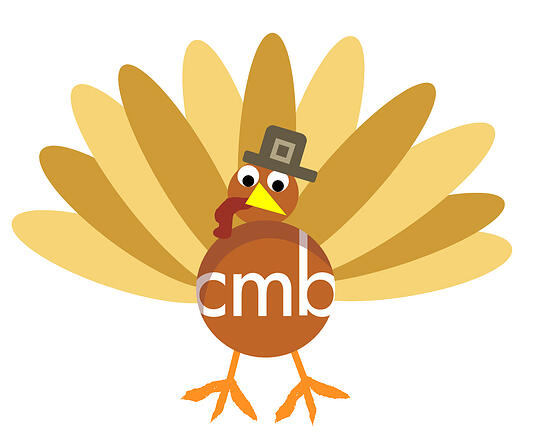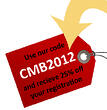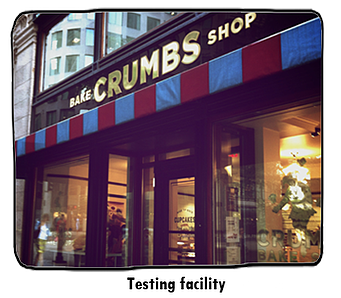 Black Friday, Cyber Monday, Tech Tuesday… the offers keep rolling in, and this year, I cracked. Yes, I still love you LL Bean, Lands’ End, Williams Sonoma, and Wal-mart. But I can’t take your daily barrage anymore; it’s time to purge.Despite my innate skepticism—no matter what you do or say, you can’t get off a mailing list–I forged ahead to try to staunch some of the flow. I mean, if I am spending even 10 seconds on each of the 100-odd commercial emails I get a day, couldn’t I find a better use of my time, like baking cookies? Not to mention, I remember reading somewhere about how much energy an email takes to generate, send and store, etc. So really this was a green effort on my part.
Black Friday, Cyber Monday, Tech Tuesday… the offers keep rolling in, and this year, I cracked. Yes, I still love you LL Bean, Lands’ End, Williams Sonoma, and Wal-mart. But I can’t take your daily barrage anymore; it’s time to purge.Despite my innate skepticism—no matter what you do or say, you can’t get off a mailing list–I forged ahead to try to staunch some of the flow. I mean, if I am spending even 10 seconds on each of the 100-odd commercial emails I get a day, couldn’t I find a better use of my time, like baking cookies? Not to mention, I remember reading somewhere about how much energy an email takes to generate, send and store, etc. So really this was a green effort on my part.
But I digress. As I got rolling, I noticed several unsubscribe methods. And it got me thinking about how they—the marketers, should keep contact with me—the consumer, while not annoying me (yes, me over here with the credit card at the ready!). Because, as I mentioned, I still love those guys for the most part.
And so here’s how the world of unsubs breaks down in my recent experience:
The Clean Cut and Run: This is the one I wonder about the outcome of most. While everyone pretty much has to offer the unsubscribe option when they email you, my suspicious side makes me think they are actually validating my email when I click through and unsubscribe. I am, after all, confirming my existence with a live email address. Sometimes you hear back that, “yes, you are off the list now,” while at other times it feels like you’re shouting into the void. The latter situation leaves me with a less than positive feeling.
The Good Bye and Good Luck: This is when they say something like, “Aw shucks! We’ll miss you.” And you feel a moment’s regret, but know in your heart of hearts they will be back someday… well maybe. At least you parted on good terms.
The Really? Good-bye?: They will let you go, but not without a last ditch effort to ask, “Why? How could you do this to me? You’re really are breaking up with me?” And you might, if not doggedly persistent, find yourself caving and not following through on the unsub.
The But wait, there’s more: Here’s where the real genius starts to kick in (or is it just common sense). I click the unsubscribe link, get to a page that says something to the effect of: “OK so how often would you like to get emails from us? Is once a week too much, how about once every two weeks or once a month? Would you be willing to get a quarterly update? You don’t want to never get them, right?” And chances are I don’t want to cut them off completely, but I sincerely do want to de-clutter. So I end up saying, sure, you can keep sending me something once in a great while.
Then there was one with the option to choose a contact timeframe, and the options were:
Multiple times a day
Once a day
2-3 times a week
Once a week
Never
Umm. I have to say “never” wins here. Who is clicking an unsubscribe link only to say, “Yes, please send me emails several times a day?” Fact is, and this is undoubtedly personality driven, if I am going to shop, chances are I already know what I am looking for and I start from Amazon or the retailer’s page directly, not from an advermail. They probably have some offer right there on their home page after all. It’s not as if I truly believe they are only sending me the alert that they have a 10% off + free shipping deal underway… plus there’s always RetailMeNot for a coupon code!
 But I think my favorite unsub result may be when you get an email confirming you just said you didn’t want any more emails. Granted, I really DID need to purge that pizza joint from a trip 2 years ago to DC. I live in Boston and good as it may be, their pizza won’t be delivered all the way up north.
But I think my favorite unsub result may be when you get an email confirming you just said you didn’t want any more emails. Granted, I really DID need to purge that pizza joint from a trip 2 years ago to DC. I live in Boston and good as it may be, their pizza won’t be delivered all the way up north.
So at the risk of dismaying some email marketers with my Scrooge-like email purge, just know I feel fresh and invigorated again now in the anticipation of a clean start to the New Year. Some of you marketers made me feel listened to and heard. And I am grateful for it. Maybe even grateful in a way that reminds me to check you out next time I need a new blender, or a pair of fingerless gloves.
Kate is a Project Director, working with clients across many industries at CMB. She has been known to perform in local musical theater here and there, speaks three languages well and a few others passably, and loves coincidence.
Learn more about why people subscribe to emails (or don't) with our Consumer Pulse: 10 Quick Facts about How and Why Consumers "Like" and Subscribe.


 I start to fantasize about Thanksgiving Day as soon as I’ve finished the last of the Halloween candy. From getting up at the crack of dawn, to saying grace, right up until the end of the fourth quarter of the last football game, Thanksgiving is filled with all kinds of wonderful rituals and traditions I look forward to every year. But things DO change –just as our forefathers never could have dreamt of the magnificent poultry innovation we call Turducken—few would have guessed how Black Friday’s evolved in just the last decade. Certainly the fact that many retailers will be starting their “Black Fridays” ON Thanksgiving has gotten no shortage of press. But it’s mobile’s impact on the shopping season that will likely decide the financial winners and losers.
I start to fantasize about Thanksgiving Day as soon as I’ve finished the last of the Halloween candy. From getting up at the crack of dawn, to saying grace, right up until the end of the fourth quarter of the last football game, Thanksgiving is filled with all kinds of wonderful rituals and traditions I look forward to every year. But things DO change –just as our forefathers never could have dreamt of the magnificent poultry innovation we call Turducken—few would have guessed how Black Friday’s evolved in just the last decade. Certainly the fact that many retailers will be starting their “Black Fridays” ON Thanksgiving has gotten no shortage of press. But it’s mobile’s impact on the shopping season that will likely decide the financial winners and losers.
 This summer, a
This summer, a 
 One trick that I’ve learned over time is, whenever I get stuck with these types of issues, I just make up hypothetical results for the different types of questions I am considering, and then I assess whether or not the data would answer my client’s business objective.
One trick that I’ve learned over time is, whenever I get stuck with these types of issues, I just make up hypothetical results for the different types of questions I am considering, and then I assess whether or not the data would answer my client’s business objective.








 1) Taste bias: As much as I consider myself a cupcake expert (over 10 years of enthusiastic experience), I realized my opinion is not the ONLY one that matters. So I enrolled three other friends (#team crumbs: @jenisgolden, @skearney21, @caitdailey), so we could all provide rankings and “correct” for outliers.
1) Taste bias: As much as I consider myself a cupcake expert (over 10 years of enthusiastic experience), I realized my opinion is not the ONLY one that matters. So I enrolled three other friends (#team crumbs: @jenisgolden, @skearney21, @caitdailey), so we could all provide rankings and “correct” for outliers.

 “As a chocolate lover, there wasn't much more to ask from a cupcake. The vanilla custard in the filling and cheesecake frosting helped avoid a chocolate overload.” –@skearney21 on ‘blackout’.
“As a chocolate lover, there wasn't much more to ask from a cupcake. The vanilla custard in the filling and cheesecake frosting helped avoid a chocolate overload.” –@skearney21 on ‘blackout’.  The day that we all become as tech-savvy and suave as Tom Cruise in Mission Impossible is fast approaching. How do I know? A few years after a Cruise movie is on the big screen, his cool gadgets are for sale in a store near you. Don’t believe me? Just watch any 24-hour cable news show and you will see that they are all using the same multi-touch wall display that Tom Cruise first popularized in the movie, Minority Report.
The day that we all become as tech-savvy and suave as Tom Cruise in Mission Impossible is fast approaching. How do I know? A few years after a Cruise movie is on the big screen, his cool gadgets are for sale in a store near you. Don’t believe me? Just watch any 24-hour cable news show and you will see that they are all using the same multi-touch wall display that Tom Cruise first popularized in the movie, Minority Report. Instead of worrying, retailers need to take action and realize that these tech advancements in shopping can be used to their advantage to create a personalized shopping experience. Leveraging data already collected from loyalty programs or Point of Sale can provide shoppers with a compelling reason to make their purchases in a retail store, creating and providing a seamless and elevated experience for the buyer. The resources to make this experience a reality are available; retailers have the data, it is just a matter of learning how to use it effectively.
Instead of worrying, retailers need to take action and realize that these tech advancements in shopping can be used to their advantage to create a personalized shopping experience. Leveraging data already collected from loyalty programs or Point of Sale can provide shoppers with a compelling reason to make their purchases in a retail store, creating and providing a seamless and elevated experience for the buyer. The resources to make this experience a reality are available; retailers have the data, it is just a matter of learning how to use it effectively.